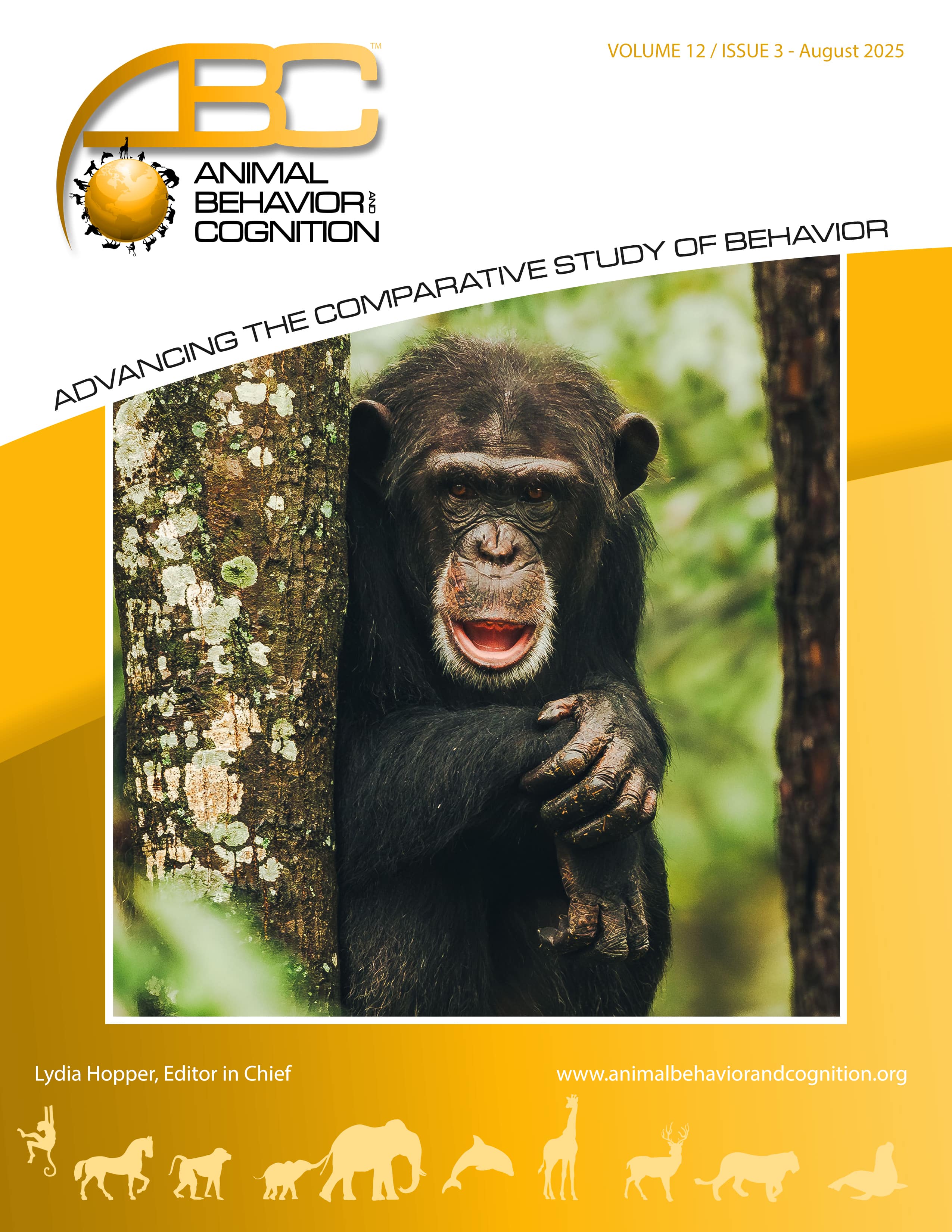Vol 12, Issue 3, August 2025
Ambient Temperature and Humidity, But Not Sex, Age, or Time of Day Influence Inactive Chimpanzee (Pan Troglodytes) Nasal Temperature: Important Methodological and Reporting Considerations
Citation
Lake, B. R., Hopper, L. M., Binder, A. K., Fultz, A., & Gabriel, K. I. (2025). Ambient temperature and humidity, but not sex, age, or time of day influence inactive chimpanzee (Pan troglodytes) nasal temperature: Important methodological and reporting considerations. Animal Behavior and Cognition, 12(3), 431-442. https://doi.org/10.26451/abc.12.03.05.2025
Abstract
Thermal infrared imaging provides noninvasive autonomic monitoring in freely moving subjects, leading to research on its potential to distinguish mental or emotional states in non-human primates and as a physiological measure of welfare. Unfortunately, methodological variations and the absence of standard reporting conventions may hinder comparisons across studies and species. In an effort to identify variables that may be particularly important for researchers to consider procedurally or standardize, we evaluated the influence of environmental, subject, and image variables on baseline nasal temperature. The current study employed a simple, regular methodology for recording thermal imaging data in 16 female and 14 male adult free-ranging sanctuary-housed chimpanzees (Pan troglodytes) across different ambient temperatures. Over three months, thermal images were captured from 1-5 m distance from the subject after each chimpanzee was inactive for two minutes. Of the 608 images collected, 540 (M = 18.00 images per chimpanzee, SD = 3.49, Range = 12-27) were deemed to be suitable for analysis as they were not taken in direct sunlight and met, or exceeded, our pre-set minimum pixel number in the region of interest (ROI) of the photograph. Separate stepwise multiple regressions revealed that mean and minimum nasal temperature were each influenced by ambient temperature and humidity, and that minimum nasal temperature was also affected by ROI pixel number. Nasal temperature measures were not influenced by subject sex or age, time of day, indoor or outdoor location, or subject distance from the camera. These findings highlight the importance of controlling for differences in environmental variables procedurally or statistically across conditions in thermal imaging studies as well as standardized reporting of ROI pixel number data.
Keywords
Infrared thermography, Chimpanzee, Nasal skin temperature, Sanctuary, Ambient temperature, Methodological reporting
